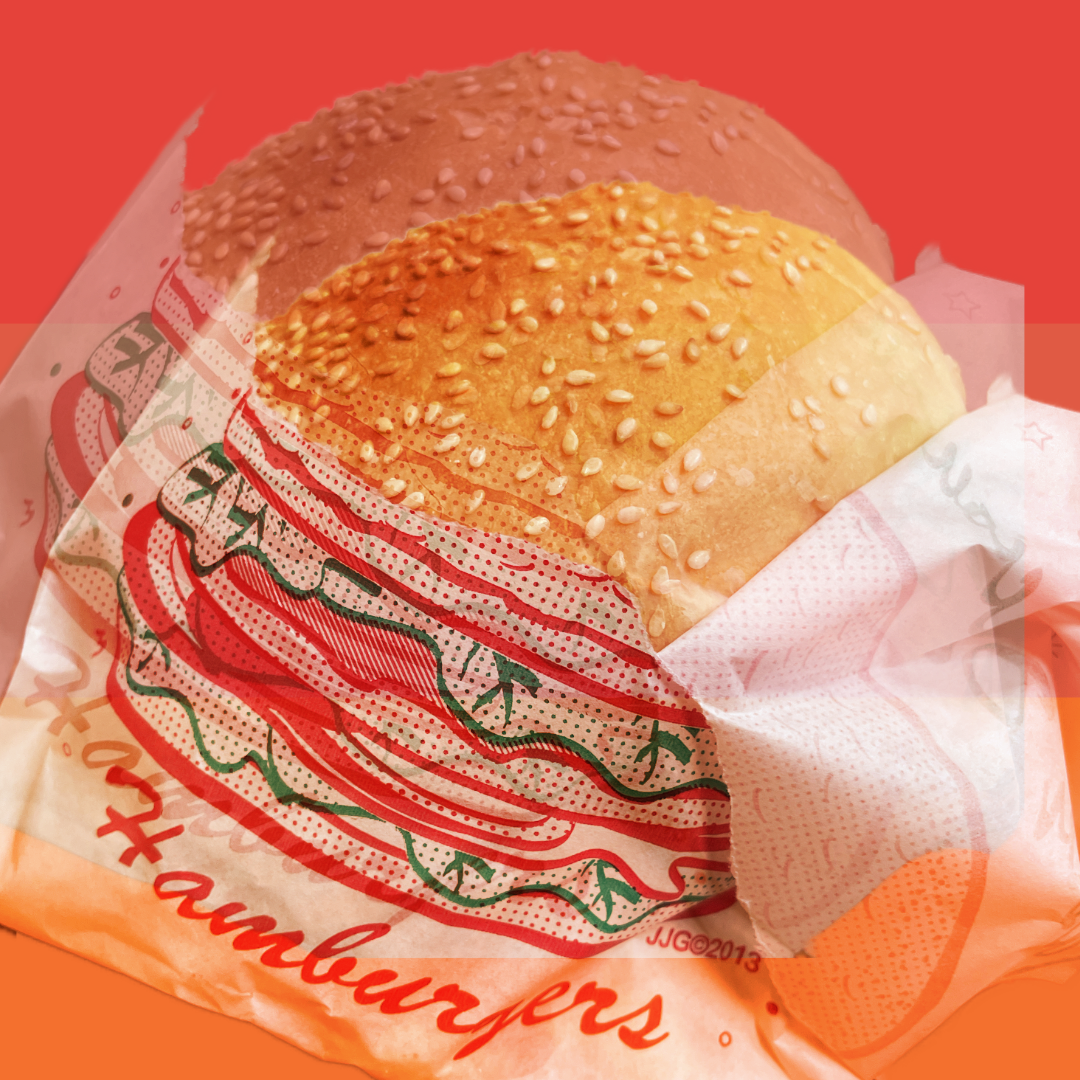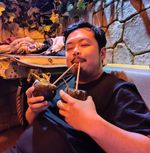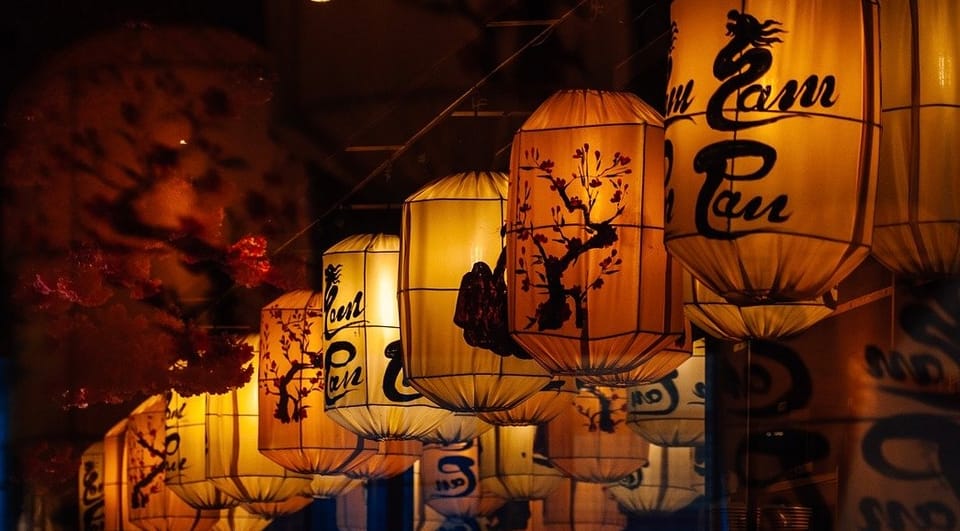How and what to order at an American Breakfast Store in Taiwan
I fondly remember one morning after a night out partying in university in Canada, I happily made some sandwiches for breakfast for the friends who crashed at my house. I didn't make a breakfast sandwich, i.e. whatever chopped up scrambled with eggs. Instead, I made a full blown deli sandwich. They were flabbergasted by what I had made for them, some even offended. It was only until then that I learned that deli sandwiches and even burgers were not meant to be eaten for breakfast. For the record, we're no longer friends.
Most people's perception of Taiwanese breakfast is of Chinese pastries, both savoury and sweet, and soy milk - something that actually only became the norm in the 1950's, after the Nationalists retreated onto the island. However, among the plethora of Eastern offerings, there exist this whole other industry, one that is vastly bigger in production scale and marketing, supplying the entire country with American-style breakfast. They serve burgers, sandwiches, and even fries and nugget! Well, sort of - we use pork instead of beef for patties, bread that makes wonder bread a wonder, and anything remotely with lactose is instead some sort of dairy-free substitute. These so-called American breakfast stores is the classic case of cultural appropriating things before the time of internet with whatever is available locally. They're no juicy half pound patty cooked medium on a brioche bun, but we all know that when walking in the store expecting to pay a dollar or two USD for a burger.
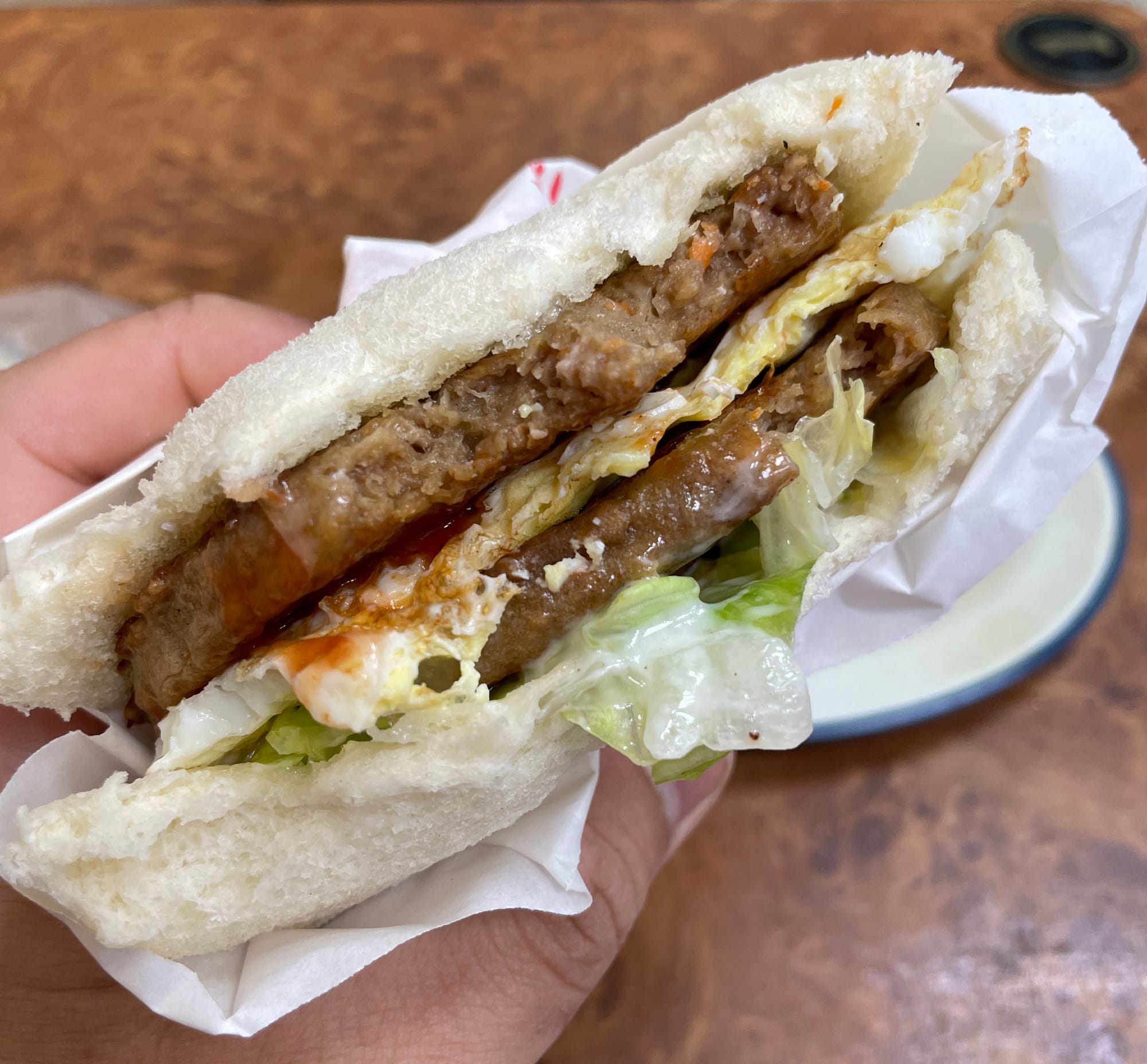
These stores sprung up in the late 1980's, and spread densely across northern Taiwan as I started going to school. Central and southern Taiwan also has a good degree of American breakfast stores, but they're not as popular compared to the north. For many students, this is a daily stop first thing after leaving the house, or just before heading onto campus. That's how I grew up thinking people in America would eat these for breakfast as well. Their loss, my gain (in body weight).
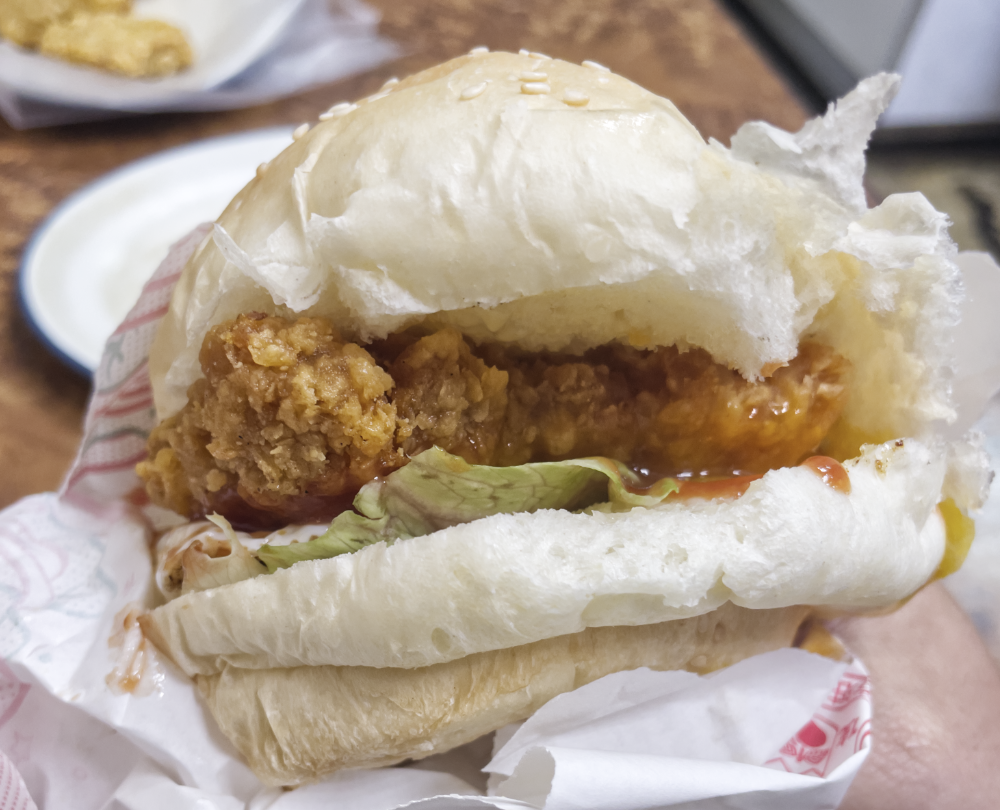
Today, I'm delighted to share with you the story behind these American breakfast stores, how it went from a business opportunity to a business empire. Also, a guide to how to order at these breakfast stores without feeling overwhelmed.
American military had a pretty big presence on Taiwan soil up until mid 1960's. That brought over a ton of American cultural influences, which of course included foods like, well, hamburgers and hot dogs. There were also deals between Taiwan and the US government to import American wheat, as well as various soft propaganda to promote the consumption of American food made from said imported wheat.
Mary worked in the kitchen over two decades serving the US's Military Assistance Advisory Group, a group of military officials assisting and training military in the country that they were deployed to. When the Advisory Group left in 1978 because the US government officially broke official ties with Taiwan, Mary came out and opened the first independent burger joint, Mary's Diner, the following year. (She retired last year in 2023, good for her!)
The American influences and policies also led to the first hamburger chain, 麥當樂 (Maì Dang Lè), who opened the same year as Mary's Diner. They were quite the hit of course, until OG McDonald's (麥當勞, Maì Dang Laó 🤔) opened its first store in 1984. Maì Dang Lè couldn't shake off their fraudster label from the public and eventually bellied up in the midst of McDonald's suing them.
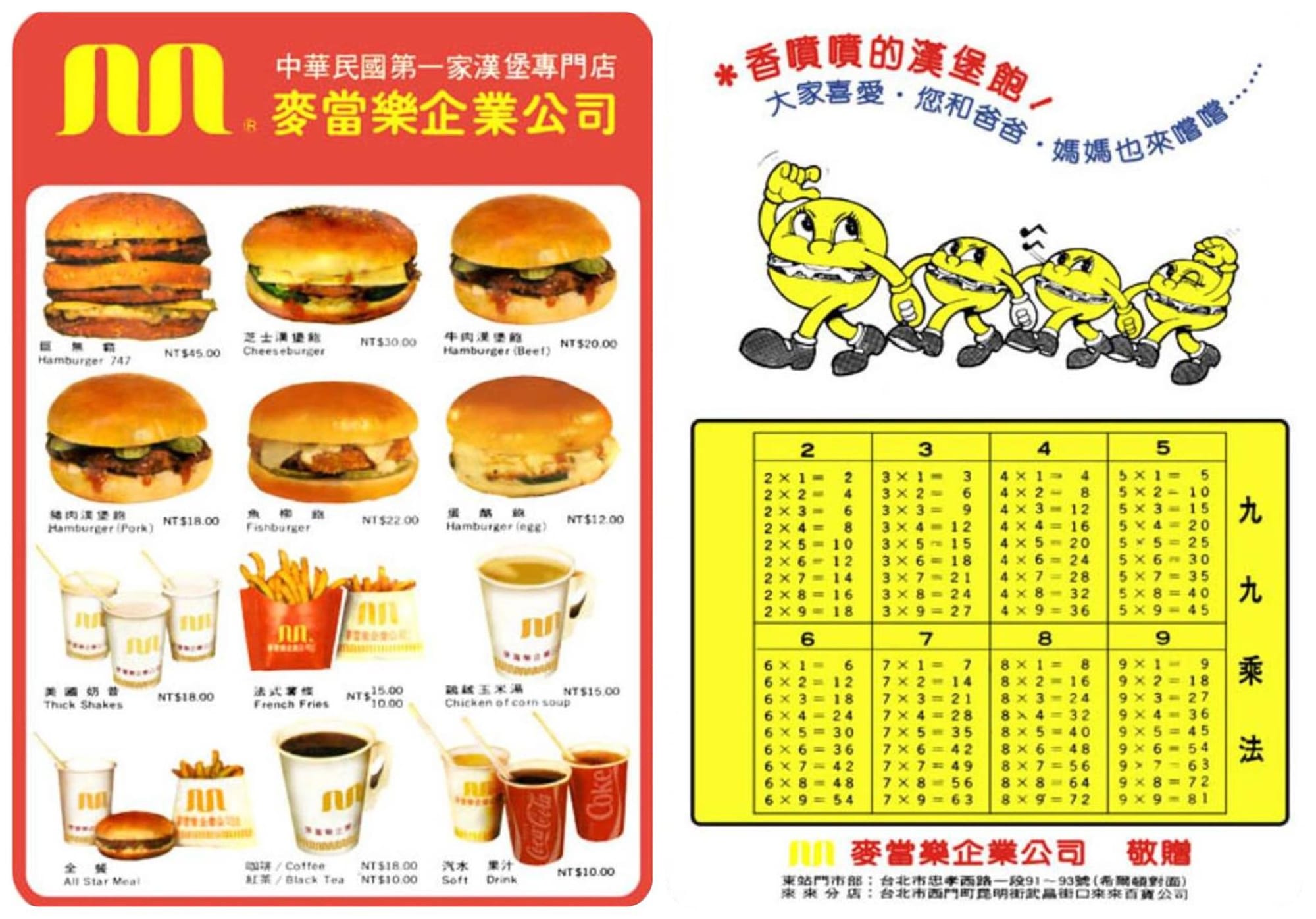
Both Mary and Maì Dang Lè only sold burgers for lunch and dinner. The trend of having burgers for breakfast however, wasn't some marketing ploy or research to push for a wider service hour. It started because someone literally just tried.
After learning about eating hot dogs at a baseball game in the US, 林坤炎 (Lín Kū Yán) attempted to do something similar outside baseball stadiums in Taipei but with hamburgers instead. It unfortunately had no traction, so he tried to sell them outside of a vocational high school in the morning. Hungry kids would eat anything, and burgers they were. This brought Lin his first bucket of cash, and years later he moved onto serving in a brick and mortar location in 1981.
News spread like wildfire. Now you can get a burger at seven in the morning! Lin taught his close friends and family the business model, and these stores too spread like wildfire. One of Lin's relatives brought the business model to the south of the country and opened the first store in Tainan.
In a couple of years, you were able to see an American breakfast store pretty much every corner in Taipei. Not only because there were demand to serve a growing audience, but also that the bar to open them was low. There were no need for specialized equipment (all you really need is a fridge, a freezer, a griddle, and toasters). More importantly, aside from brewing fresh tea in the morning, the rest of the ingredients were already processed. For most of the items you only needed to reheat them or finish grilling them on the griddle. Supplies didn't need to come in daily since they can be in the freezer, except for eggs and some dairy products. Learning to cook things on the griddle was a small learning curve and one could get into a productive rhythm quickly.
It wouldn't be a post-industrial-boom Taiwan if there weren't copycats following suit. While Lin was the OG, he made one fatal mistake - he did not register his trademark. Most of these stores used a variation, sometimes even a direct copy of his store's name: 美而美 (Meī Ér Meī, "MEM"). To make things worse, some else had went ahead and registered the trademark, which made Lin the violator instead. After a lengthy battle expanding almost a decade, the ruling was finalized. The court determined that the format "Mei something Mei" as a weak trademark, because this format had become a proprietary eponym. By prepending one's unique trademark before the Mei X Mei, the entire trademark in considered legal.
Lin's "franchise" added the 巨林 (Jù Lín) prefix to their stores. I would like to point out that franchise was quoted because, technically he never really had setup a franchise before the being sued by his own creation's name sake. Between the friends and family that he taught, he never really asked for a brand licensing fee. Neither did he consolidate the supply chain - in fact he asked for his followers to figure it out on their own. In contrast, a fellow by the name of 賴瑞麟 (Laì Ruì Lín), applied for the Meī Ér Meī trademark as soon as he started. Laì aggressively opened 40 stores, both directly owned and franchised, in just the first year in 1988. Laì also dropped 100 million Taiwan dollars (3 million USD) to build a central kitchen so that he would own the entire vertical supply chain. His variation of the brand, 瑞麟美而美 (Ruì Lín Meī Ér Meī), is pretty much the de-facto MEM today. For Lín's MEM, even though his brand did very well in the beginning, their brand suffered from loose management, unprofitable franchise structure, and the lack of brand refresh to keep up with the time and the market.
With the trademark war finally settled in 1994, the war of a hundred brands began, where every brand did pretty much anything to take most of the pie, may it be with dirty or dirtier ways. Today, most of the notable franchise brands today are somewhat closely related. Despite looking like separate entities, many of them are under the same management. There are the classic Adidas/Puma split situations, as well as big corporations creating new brands to differentiate target audience. Independent-ran breakfast stores get their supplies usually within one supplier network. This "MEM supply chain family tree" of relationships however, is kept hidden from the general public. My attempts to reach out to these franchise as an outsider led to very little new information.
How to order, like, really
This is the menu from the breakfast store I ate growing up, and still eat every time I visit. The store has changed many hands, but the food has largely remained the same. The menu may look daunting for one who can't read Chinese:
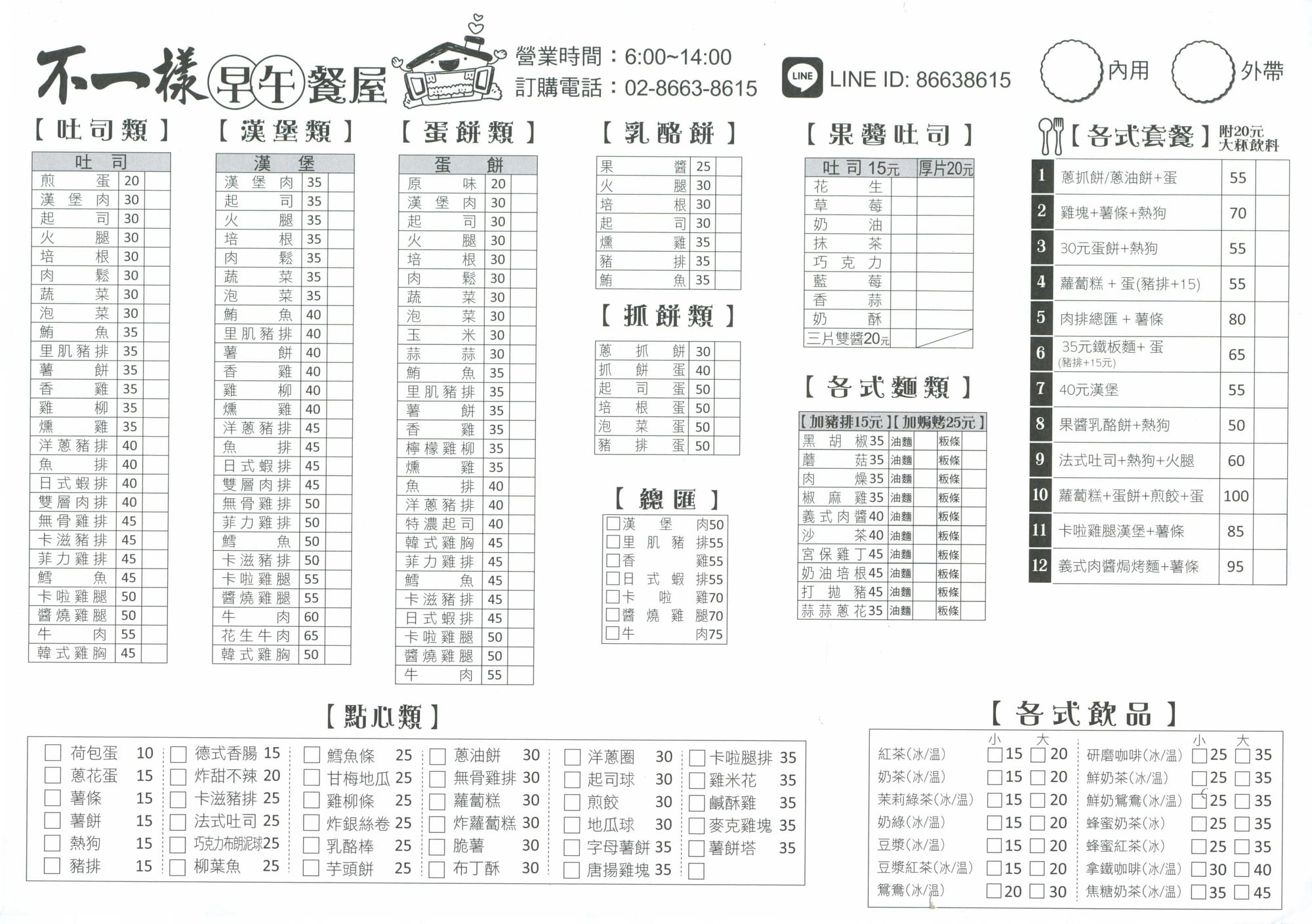
Upon a closer look, you'll realize that the first three sections from the top left have largely identical items. The difference is that one is for burgers, one is for sandwiches, and one is for Taiwanese crepes. Even the three small sections in the centre contain options that are just subsets of the larger sections. So instead of reading through the whole menu, think about what filling you want, in what delivery vehicle, plus a couple common modifiers.
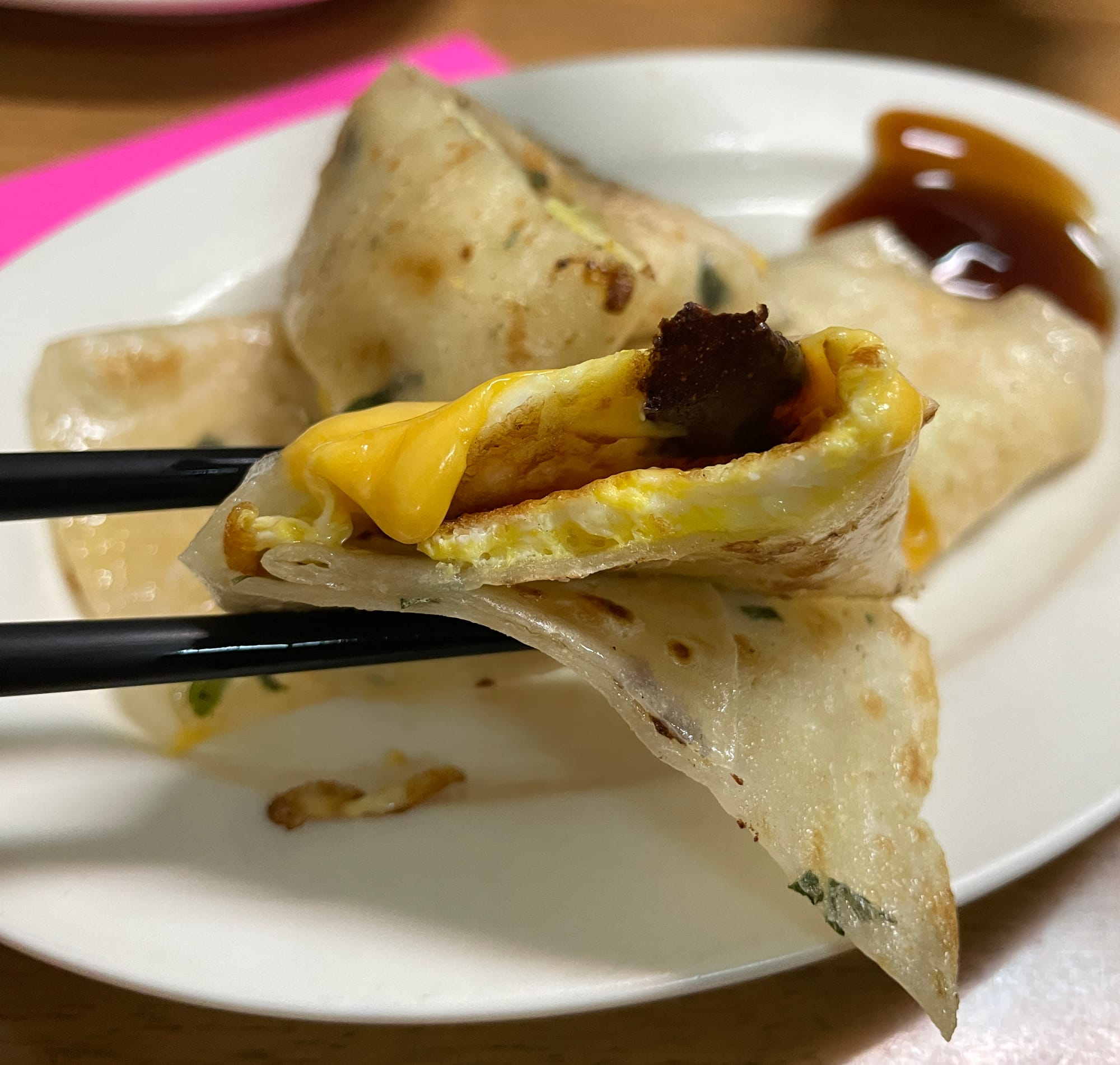
Aside from the burgs, sandos, and crepes, popular main items also include 蔥抓餅 (Cong Zha Bīng, a flaky version of green onion pancake, but little to no green onion), and 鐵板麵 (Tiē Bā Miàn, teppanyaki noodles). These noodles came out when I was in elementary school, with only two flavours: black pepper and tomato-based mushroom. The country lost it when these came out - it was so popular every store tried to carry them. Many had limited stock everyday, as well as limiting the pacing of orders, because they take up a significant time and portion on the griddle.
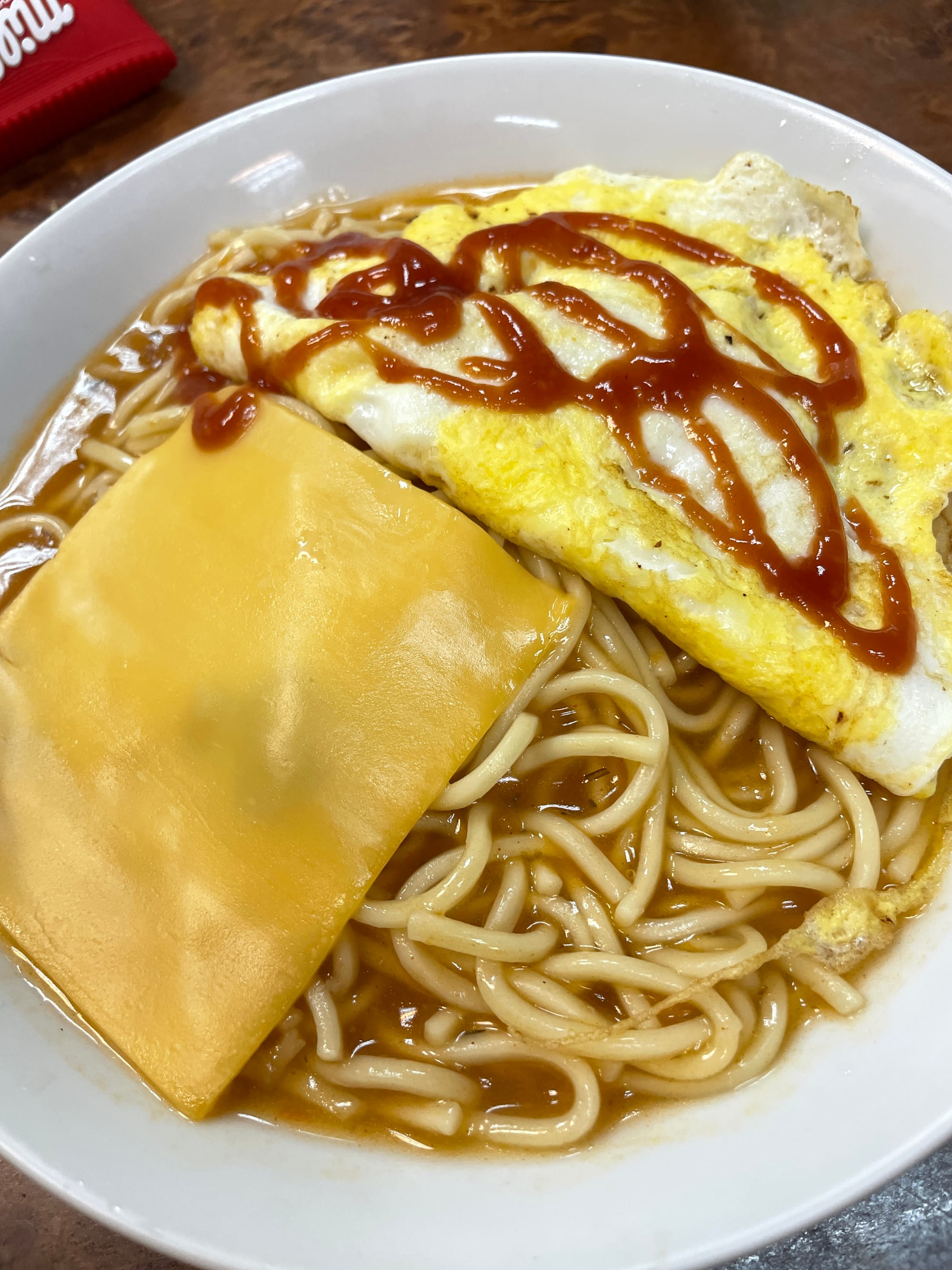
Once you've championed the main breakfast items, you go on to drinks. The usual options are between two or three sizes, and getting them hot, warm, or cold. Simple as that. Some places may have half sugar/no sugar options but that's rare. I would highly recommend milk tea. From the land that invented bubble milk tea, the milk tea at a breakfast store is nothing like the ones in bubble tea shops. You shouldn't be expecting anything of high quality: black tea with vanilla extract brewed mainly from the stems or rejected leaves; non-dairy creamer from a specific bottle shape that somehow all breakfast stores use despite the bottle having different labels; and sugar of various molasses levels in unlabelled bags by the kilo. But milk tea from a breakfast store just hits different - it has a very specific flavour profile that it's important for every store across the country to make it exactly the same. Nothing makes a Taiwanese with morning grumps even more upset by trying to serve them breakfast milk tea with a twist. Save the one-upping milk tea game for the bubble milk tea industry.
If their black tea is acceptable without the creamer, then you know their milk tea is good. You might get away with 鴛鴦 (Yuan Yang, which is the name for Mandarin Ducks, but we took it from Hong Kong to refer to a 50/50 mix of black tea and coffee, strictly with milk or creamer), but I would avoid ordering coffee. Get coffee at a 7-11 or Family Mart if you really want it. Soy milk is also good if you want to switch it up.
You can probably tell by now that these stores no longer strictly carries western food items. Whatever can be made quickly and there's traction for it, these stores will carry them. I always find it funny that while you can always order some Chinese items on the menu, they are always cramped into the section under add-ons and sides. As I was writing this I tried to figure out it if having these items under a secondary section shaped my ordering habits of ordering these as sides, or if people kept ordering them on top of their burgers and sandwiches, they ended up being a sold as side dishes. While I never got to the bottom of this, I figured at the end of the day, these stores are American Breakfast Stores at the core, so naturally the burgers and sandwiches are first on the menu.
That's about it! Understandably there's a lot going on, but fret not - before I send you off, remember the next time you're in Taiwan searching for some culturally appropriated western breakfast, take this guide with you.
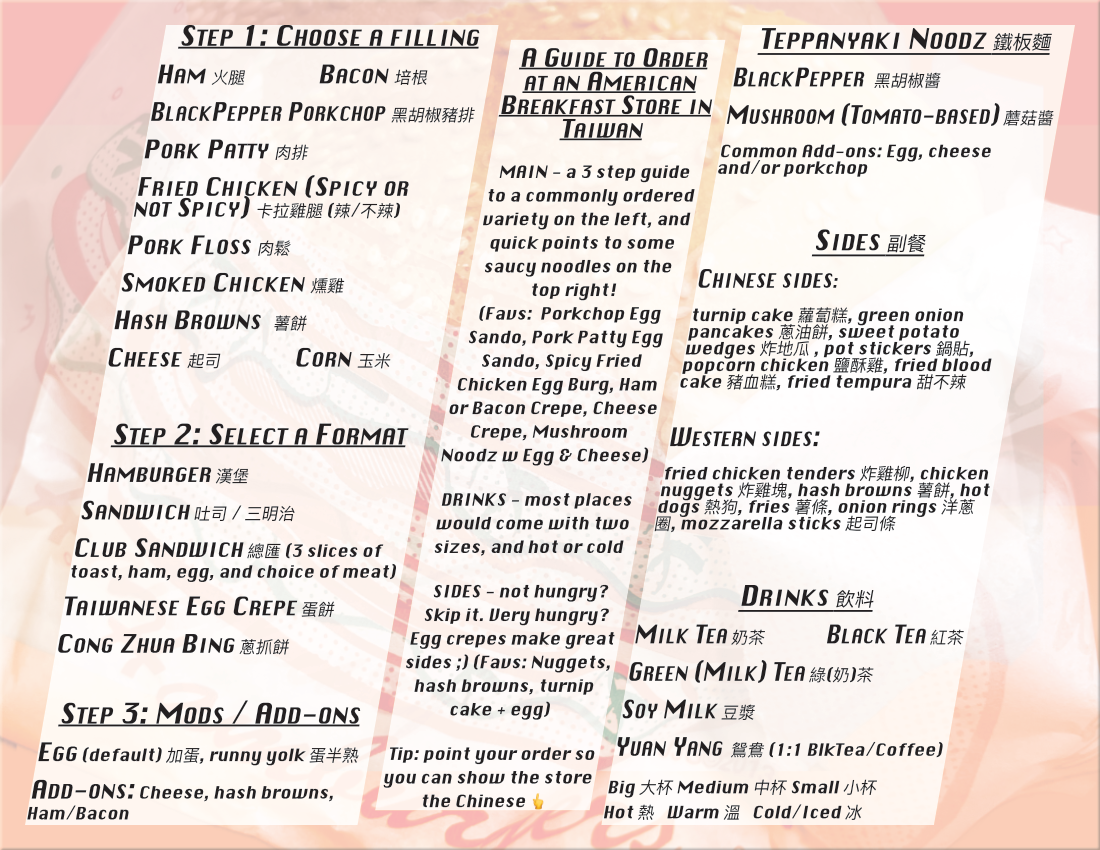
🛵
